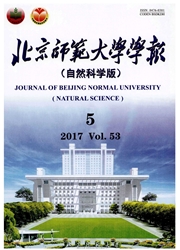

 中文摘要:
中文摘要:
地球上的微生物有着极高的丰富度和多样性.它们的生命活动和相互作用对维持生态系统稳定性起到关键作用;生存在宿主体内的微生物对其宿主的健康有重要影响.第二代测序技术的发展使得科学家获得了大量的关于微生物群落和功能基因组成的数据;而微生物群落和生态系统生态学的重点,正在从获得观测数据转变到理解微生物相互作用过程,并预测群落结构和功能的动态变化.近年来发展了很多针对第二代测序数据的算法和数学模型,以推测微生物种间相互作用网络,但这种自上而下的研究仍存在局限性.自下而上的实验研究可以对微生物种间作用进行直接验证,并帮助我们理解更高层次上的生态学模式和过程.与此同时,基于数学分析或模拟的理论研究展示了微生物相互作用的动态及其对群落动态和功能的影响.今后的研究应该结合观测数据、实验验证、理论模型多种研究方法,增进我们对微生物种间相互作用的理解并做出预测,以应对全球气候变化、传染病暴发、抗生素抗性进化等诸多挑战.
 英文摘要:
英文摘要:
Microbial species in natural habitat has extremely high abundance and diversity, their activityand interactions play an important role in maintaining ecosystem stability. Microbiota in human and other hostsaffects host disease and health. Next generation sequencing technology makes possible to quickly obtain data ofmicrobial community composition and function. Research focus in microbial community and ecosystem ecologyhas shifted from describing observational patterns to understanding microbial inter-specific interactions, and topredicting dynamic changes in community structure and function. Numerous algorithm and modeling techniqueshave been developed to infer microbial network from sequencing data. However, such top-down approach hasintrinsic limitations. The bottom-up approach, that is, direct investigation of microbial interactions through invitro and in vivo experiments, could help to understand higher level ecological patterns. In addition, analyticalmodeling and simulations can reveal how microbial interactions affect community dynamics and function. Futurestudies could benefit from integrating these observational, experimental, and theoretical approaches, toimprove understanding and prediction of microbial interactions, and to meet the challenges of rapid climatechange, pathogen infection, and antibiotic resistance evolution.
 同期刊论文项目
同期刊论文项目
 同项目期刊论文
同项目期刊论文
 期刊信息
期刊信息
